Critical Analysis: Locating Sources
Critical Analysis: Locating Sources
A critical analysis explores a primary text’s impact or message. The goal is to offer a reasonable interpretation of the primary text for your audience to consider, while understanding people may still disagree with your conclusions. Your interpretation or argument should be supported by evidence from the text and your secondary sources.
Types of Sources
The first step is to pick a primary source or text to analyze, which may include an assigned book, short story, poem, or article. If possible, try to select a text you find personally relevant or interesting. A personal connection to or interest in a text will keep you motivated when working on the assignment. Then, you should find some secondary sources about your text. Check your assignment instructions to see what kind of secondary sources are acceptable or required for your paper. Professors may want your secondary sources to be recently published or written by credible authors. Below is a list of resources to help you locate sources that suit your assignment.
Del Mar College (DMC) Reference Librarians
DMC Reference Librarians are experienced researchers who can guide you to useful tools and resources that make finding primary and secondary sources easier. These librarians have created LibGuides that recommend online databases you can use when researching. Reference librarians are available to support DMC students throughout their studies. More information can be found on the DMC Libraries’ website at https://delmar.edu/library.
DMC Library Databases
In addition to reference librarians, the DMC Libraries have access to numerous online databases with scholarly research articles, e-books, movies, newspapers, and magazines. Beacon is one of the most well-known databases with a search box on the libraries’ homepage. When choosing which database to use, check your assignment instructions first to see if your professor would prefer you use a specific one. Otherwise, you can browse and sort databases by their subjects (e.g., English, Nurse Education, etc.), types (e.g., E-books, Primary Sources, etc.), and providers (e.g., JSTOR, Newsbank, etc.).
Example
Let’s say I’m writing an essay about the impact of pet ownership on mental health. I might search "Pets and Mental Health" on Beacon. Then, under the section on the left side that says, "Limit To," I would check the boxes that state “Full Text” and "Scholarly (Peer Reviewed) Journals" to narrow my results.
From there, I am able to look through the search results, and I notice an article titled "Pet Ownership and Its Influence on Mental Health in Older Adults." Once I click on that link, I am able to read the abstract to determine if this journal will provide me with information relevant to the essay I want to write. I can then click the link titled "PDF Full Text" and read through the journal article to learn more about the subject and locate quotes I can use in my essay. For more on how to search for sources using databases such as Beacon, check out the DMC Libraries’ LibGuide: https://libguides.delmar.edu/beacon.
DMC Library Catalog
On the DMC Libraries’ website, there is an online catalog that lists all the items you can reserve or check out. When using the DMC Libraries’ Catalog to find primary and secondary sources, limit your search by item type and category for better results (e.g., book, magazine, newspaper, periodicals, etc.). After finding a suitable source, make note of its location within one of the libraries. If you have trouble finding a source on your own, be sure to ask a reference librarian for assistance.
Works Cited of Secondary Sources
Another useful place to find sources is by looking through the works cited of other secondary sources. Every scholar lists the primary and secondary sources they used in their own research. You can track down a scholar’s sources to see if any suit your topic.
Page last updated July 6, 2023.


